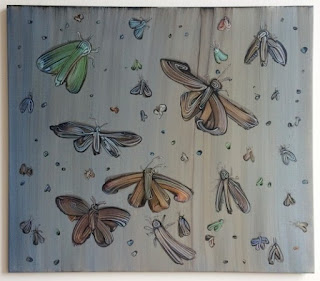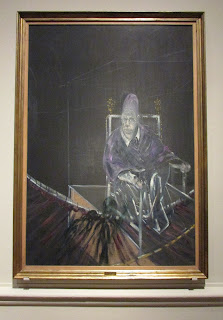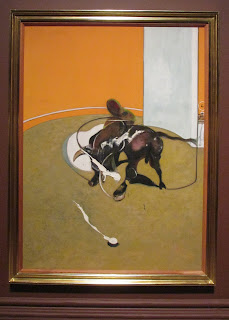"People say that it's difficult to know oneself... but it's not easy to paint oneself either" - Vincent Van Gogh.
This is a small but fascinating exhibition compared to the large Tate exhibition of 2019 (here) which explored Van Gogh's years spent in London. This Courtauld show is set over two rooms containing fifteen of the 35 self-portraits created by Vincent Van Gogh. The small exhibition spaces allow for an up-close, intimate examination of these portraits. The exhibition charts not only the developing painting styles of the artist and stylistic transitions he made to find his own authentic voice or painterly language, but also the sad decline in his mental health and the crises of self-harm he underwent which would ultimately end his life. The premise of the exhibition seems to be that we should be focusing on looking at the portraits as vehicles for his artistic development rather than perceiving them solely through the perspective of his mental health struggles. Van Gogh made many of the portraits simply because he could afford to pay no other models, reasoning that if he could capture the complexities of his own likeness then, "I'll surely be able to paint the heads of the other fellows and women as well." The most radical shift in styles can perhaps be seen in the portraits from the last 3 years of Van Gogh's life where he chooses different personas for each portrait portraying himself as respectable middle-class gent, serious artist, and then recovering patient. Not all of the portraits are great, but their are just enough masterpieces here to justify the hype. Van Gogh's face contains such presence. His gaze is as intensely penetrating and serious as that of Picasso in some paintings, piercing you to the very soul, and so searchingly desperate, and that of a haunted, broken man in others. It is hard to seperate the psychological from the emotional when looking at certain of the artists portraits. Those made towards the end of his life where Van Gogh quite clearly appears sick and almost feral looking are particularly affecting. You just want to give him a hug. How wonderful that throughout his trials and tribulations materially as well as mentally, Van Gogh was able find solace in his art, and paint and found the courage to persevere, leaving such a fantastic legacy to share with us.









































































